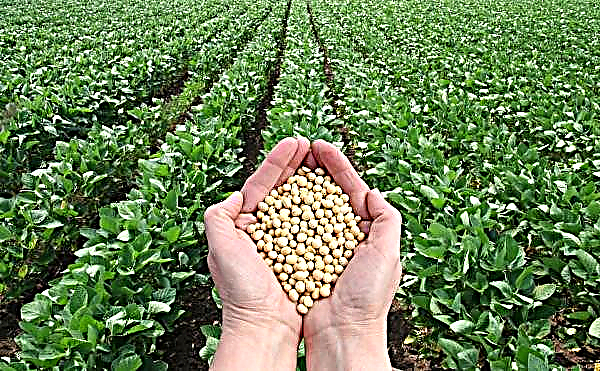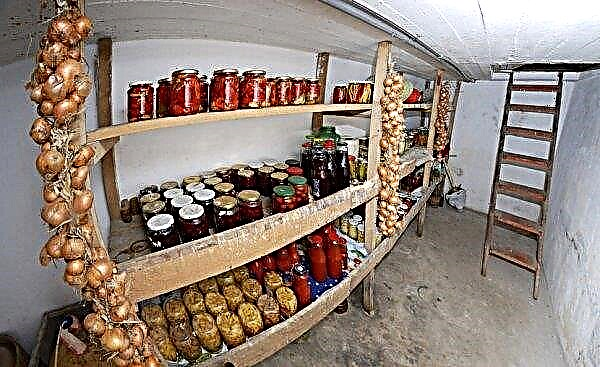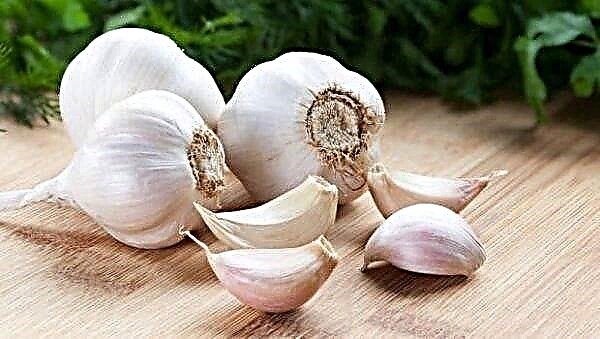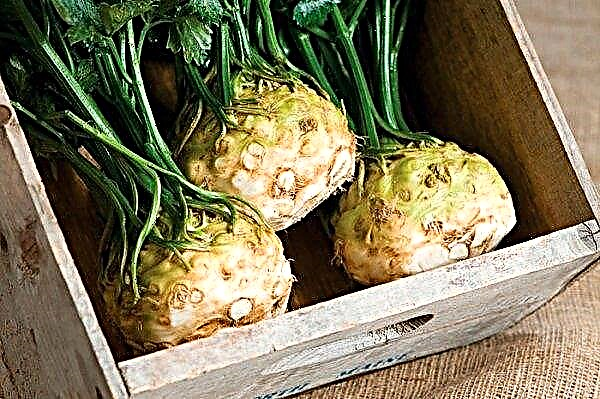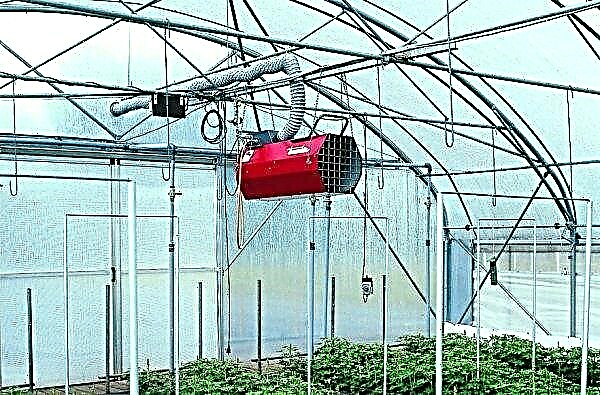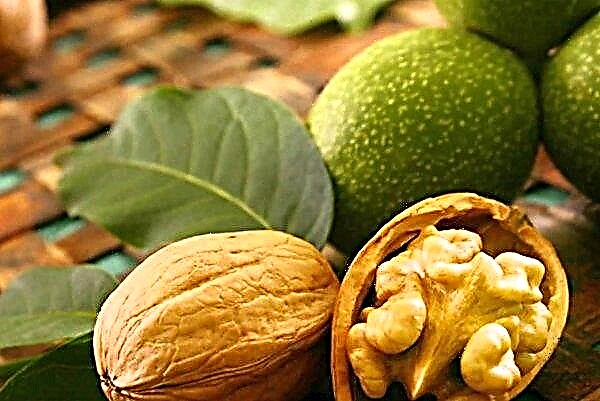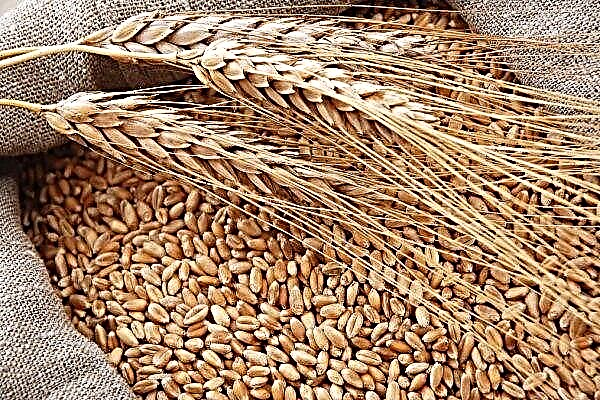Mushrooms are one of the most common mushrooms that our ancestors collected in Russia. They were salted in large quantities for the winter and ate during church fasts. Most likely, from here came the name of mushrooms. In ancient Russian and church chronicles there are references to the breasts as those that grow in a heap or on a heap.
General characteristics of loaders
All species of these mushrooms are united by the genus Mlechnik and the family Russula. You can learn the breasts from afar. A common feature of almost all mushrooms of this species is the presence of special rings on the hat. During the development period, it also changes its shape. At the initial stage of growth, the breasts have a convex hat, and closer to the collection period, it begins to resemble a funnel with the edges bent to the leg.
Often, a breast is called:
- shaggy;
- shaggy;
- subload
- violin player;
- spruce mushroom;
- canine;
- marsh.
In science, they are referred to as lamellar mushrooms. Peculiar plates may vary in color depending on the type and even flow smoothly onto the leg.Did you know? There are about 32% of proteins in the cap of the breast, which significantly exceeds the same indicator for meat. Nevertheless, in dried form they are not eaten because of the bitterness that appears in milky juice.
Video: Mushrooms
Edible species
There are much more edible types of heaps than inedible ones. They can be very similar, so each mushroom picker must know and be able to distinguish a false mushroom. Otherwise, poisoning and hospitalization may follow.
Present
The history of this species began in 1942. The well-known microbiologist and mycologist Vasilkov, studying the mushrooms, called the porcini mushroom real. The reason for this was the banal popular opinion. Although, according to the same source, earlier this pepper was called a real cargo.
The diameter of the cap ranges from 6 to 25 cm. Often its color is white, but sometimes it is pale yellow. Mushroom pickers noticed that by the time of collection a certain amount of sticky mucus was collected on it. During the growth period, the hat changes its shape, which is characteristic of this type of mushroom. Under it there are the same shade of the plate. The main feature of this real loaf is a small fluff around the edges of the hat.
The height of the legs rarely exceeds 10 cm. It has a cylindrical shape of the same color as the hat. Inside, it almost always has a kind of emptiness. If you break the mushroom, then a characteristic white juice will flow from it. With prolonged contact with air, it begins to acquire a yellow-gray tint. The real breast has a specific aroma, which remotely resembles fruit.
 The collection begins in the month of July and lasts until the beginning of October. Mushrooms are very fond of deciduous trees, especially birch trees, so in the forest they can most often be found just near these plants.
The collection begins in the month of July and lasts until the beginning of October. Mushrooms are very fond of deciduous trees, especially birch trees, so in the forest they can most often be found just near these plants.
In Eastern Europe and the Russian Federation, a real or white breast is considered to be the king of mushrooms. It is actively collected and harvested for the future for the winter. In Western Europe, it is considered inedible. This situation arose because of the milky juice, which gives the bitterness to the mushroom.
To get rid of it, the mushroom is soaked for a long time in water with the addition of a small amount of salt, and then boiled until a bluish tint is obtained. In folk medicine, this type of lump is considered an excellent remedy for kidney stones and kidney failure.
Video: Gathering real bruises
The black
The first thing worth noting is that this mushroom belongs to the category of conditionally edible. In appearance, it is similar to any other load. A significant difference is the color of the hat, which has a characteristic olive-dark tint. At the same time, its diameter can reach an impressive size of 20 cm. The flesh of a black breast differs from its predecessor in greater brittleness. With prolonged contact with air, the scrap begins to turn gray, covered with a plentiful layer of milky juice. The color of the legs is the same as the hat. As in the previous case, they can exist in deciduous forests, mainly birch forests. Mushroom picking lasts four months - from July to October. Most often used as a raw material for creating pickles.
As in the previous case, they can exist in deciduous forests, mainly birch forests. Mushroom picking lasts four months - from July to October. Most often used as a raw material for creating pickles.
Yellow
The yellow lump hat can reach a maximum diameter of 28 cm. The main difference of the mushroom is its characteristic golden hue. As in the previous species, it changes its shape throughout the entire ripening period. In the lower part there are characteristic plates that can be covered with brownish spots.
The maximum leg length is 12 cm. It has the same color as the hat. Covered with a little sticky mucus. There is a cavity inside. The pulp has a white tint. With prolonged contact with the environment begins to turn yellow on a cut or scrap. It liberates milky juice. The aroma is pleasant, but slightly expressed. It grows on limestone.Important! Mushrooms form a peculiar symbiosis with a birch. Mushrooms receive useful trace elements, and the tree - water and minerals.
 This species is conditionally edible. It can be found both in deciduous and coniferous forests. It prefers a temperate climate, therefore it is widespread throughout Eurasia.
This species is conditionally edible. It can be found both in deciduous and coniferous forests. It prefers a temperate climate, therefore it is widespread throughout Eurasia.To prepare the mushroom, it is initially soaked in salt water and boiled. It is often used as an ingredient for the preparation of drugs in folk medicine for diseases of the kidneys and gall bladder.
Red brown
This type of mushroom has a large hat, which reaches a maximum diameter of 18 cm. There is a red, bright orange, light red hue. Young breasts are distinguished by an almost flat hat, which, by the period of collection, acquires a depression specific to this type of mushroom. The edges are often bent to the leg. In rainy weather it becomes sticky.
The leg can grow up to 12 cm high. It’s strong to the touch. It has a specific cylindrical shape. Does not differ in color from the hat. The plates have a white, sometimes slightly reddish tint. If you squeeze them a little, then a brown spot appears in this place. The pulp is brittle, white. It tastes slightly sweet. It is found in almost all European and Asian countries. Harvesting can begin in mid-July. The last mushrooms can be found in the forest at the end of October. Usually likes dark areas of dense forest. Most often they are salted, but fried foods are also allowed.
It is found in almost all European and Asian countries. Harvesting can begin in mid-July. The last mushrooms can be found in the forest at the end of October. Usually likes dark areas of dense forest. Most often they are salted, but fried foods are also allowed.
Dry
The following names are often found in people:
- cracker;
- excellent russula.
It has the same white color as a white lump. The main difference from it is the absence of forming sticky mucus. Mushroom picking can begin in June and end in the month of November. It can be found in almost any forest. Prefers to grow in close proximity to trees. Usually forms a symbiosis with them. Often found near ponds and on soddy-sandy soils. A young dry lump has a characteristic convex cap with a hollow in the center. The older the mushroom, the more funnel-shaped it becomes. It reaches a maximum diameter of 15 cm. At an early stage of development, it has a pleasant white color. By the time of collection, it may become covered with specific brown spots. The leg of the mushroom is white. Often brown spots form on it. The maximum height is 5 cm.
It can be found in almost any forest. Prefers to grow in close proximity to trees. Usually forms a symbiosis with them. Often found near ponds and on soddy-sandy soils. A young dry lump has a characteristic convex cap with a hollow in the center. The older the mushroom, the more funnel-shaped it becomes. It reaches a maximum diameter of 15 cm. At an early stage of development, it has a pleasant white color. By the time of collection, it may become covered with specific brown spots. The leg of the mushroom is white. Often brown spots form on it. The maximum height is 5 cm.

Aspen
In small villages and villages, other names are often found:
- sub-aspen;
- poplar.
Prefers to grow in temperate zones. It belongs to the category of conditionally edible fungi due to the excessive secretion of specific milky juice. In appearance, it is similar to a white (real) cargo. The only significant difference is pinkish spots on the hat and the same color of the plates. When cutting, the color of the pulp does not change.  One of the largest types of breasts. The hat can reach a diameter of 30 cm. Collected mushrooms are valued less than the white and yellow appearance, but are more common.
One of the largest types of breasts. The hat can reach a diameter of 30 cm. Collected mushrooms are valued less than the white and yellow appearance, but are more common.
As the name implies, it is so named because of the place of growth, prefers deciduous forests with an abundant presence of poplars or aspen. A feature of growth is that the fungus grows underground, so at the time of collection it is almost completely covered with a layer of dirt. The collection begins in mid-August and lasts no more than two months. Has a pleasant mild fruity aroma. The aspen species is suitable only for salting.
Video: Aspen breast
Inedible Mushrooms
It should be noted that there are no inedible mushrooms as such. All types of fungus are conditionally edible or edible. The reason for refusing to eat is excessive bitterness due to milky juice or taste characteristics.
Did you know? Trace elements and rich active substances have a beneficial effect on the human body in the treatment of urolithiasis, tuberculosis, and diabetes mellitus. Mushrooms also improve memory, digestion and normalize the nervous system.
Bitter
In the people, this type of loaf is often called:
- bitter;
- goryanka;
- mustard;
- red bitter.
It grows in both coniferous and deciduous forests. The peak of growth reaches from the end of July to October. Often found in wetlands on mossy litter. The hat has a slight fluff. It reaches a maximum diameter of 10 cm. Unlike edible species, it has straight edges. After heavy rain it becomes sticky.
 The leg grows to a height of 9 cm. At the initial stage, it has a solid structure, which later becomes hollow. The shape is only cylindrical. The color is the same as the hat.
The leg grows to a height of 9 cm. At the initial stage, it has a solid structure, which later becomes hollow. The shape is only cylindrical. The color is the same as the hat.
The pulp is brittle and has a pleasant woody aroma. When eaten noticeably bitter. At the places of cut or breakage, a milk is formed that does not lose color during prolonged contact with air. Despite the fact that the mushroom is not classified as edible, pickles are often made from it (especially in Russia). For this, the breast is soaked for a long time in salted water and boiled for at least 15 minutes. Known application in traditional medicine.
Creaky
This variety is also considered more conventionally edible than absolutely non-edible. The mushroom got its name because of the creak that it publishes when it touches other objects, for example, a tree trunk. It is rarely used in food, as it is the driest species of all the above. According to the description, he is often confused with a white (real) weight.  A distinctive property is dried milk juice, which, after exposure to air, acquires a reddish tint. In the place of breaking or cutting, the flesh can also change color to a greenish-nutty. Plates are located less frequently than, for example, in pepper species.
A distinctive property is dried milk juice, which, after exposure to air, acquires a reddish tint. In the place of breaking or cutting, the flesh can also change color to a greenish-nutty. Plates are located less frequently than, for example, in pepper species.
The hat grows to an impressive 24 cm in diameter. During the growth period, it can change color to pale yellow. The stalk rarely reaches a height of 7 cm. Deciduous and mixed forests with a large number of birches or aspen are considered the place of growth. In one place you can find a large group of closely growing mushrooms.
Active collection begins in August and lasts until the end of October. It is most often salted, but acquires a specific blue color during this process. According to experts, the taste is inferior to the common white breast.

Pepper
The description of this load is not much different from the present. It has the same color and shape. The main differences are considered to be red spotting, which may (but not necessarily) occur on the hat. Its diameter rarely exceeds 18 cm. It is covered with a small fluff and has no characteristic rings.
Important! Bitter milky juice is an excellent protection against harmful insects and most diseases. To get rid of bitterness, the mushroom is soaked in water, which is changed three times a day.
Distinctive is the taste. It is as hot as pepper. Hence the name of the mushroom. At the same time, the mushroom smells like rye bread. The plates are narrow and there are many under the hat. They smoothly flow to the leg. With a light touch, the color changes to brown with slight yellowness. The pulp has a white color. At the place of breakage or cut with prolonged contact with air, it begins to turn slightly blue. The secreted milky juice also acquires a characteristic greenish tint over time.
The pulp has a white color. At the place of breakage or cut with prolonged contact with air, it begins to turn slightly blue. The secreted milky juice also acquires a characteristic greenish tint over time.
You can collect the mushroom from July to October. Often found near different trees: oak, spruce, birch. It is allowed to salt and pickle peppermint mushrooms. In cooking, there are cases when a dried grated mushroom was used instead of pepper as a seasoning for various dishes. Often used in traditional medicine.
Camphor
This is one of the smallest types of breasts. His hat reaches a maximum diameter of 6 cm. It has the same shape as each type of loader. It has a different color shade:
- reddish brown;
- brown red;
- dark red;
- purple brown.

The plates are frequent and narrow, go down to the very legs. They have a brick red tint. It reaches maximum growth in the months of July and November. Grows in large groups in one place.Since it is of poor quality, it is rarely eaten. Refers to conditionally edible types of breasts. For use, they often salt in tubs.
Based on the above description of various types of breasts, we can safely say that they are all edible when cooked correctly. A separate category of mushrooms, which are rarely consumed even in the Middle East and Russia, is inedible. Therefore, mushroom pickers themselves should deal with their desires - to follow the path of their ancestors and collect breasts or abandon them altogether, as was done in Europe.
